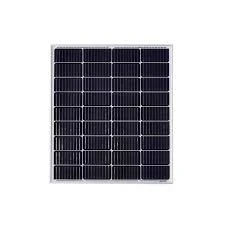Understanding Solar String Inverters and Their Benefits for Renewable Energy Solutions
Understanding Solar String Inverters A Key Component of Solar Power Systems
As the world increasingly turns to renewable energy sources, solar power has emerged as one of the most popular alternatives. In this landscape, solar string inverters play a crucial role in optimizing the efficiency and performance of photovoltaic systems. In this article, we will explore what solar string inverters are, how they function, and their advantages and disadvantages in solar energy systems.
What Are Solar String Inverters?
Solar string inverters are devices that convert the direct current (DC) generated by solar panels into alternating current (AC), which is the type of electricity used by most household appliances and fed into the electrical grid. Unlike central inverters, which connect multiple solar panels in a single large system, string inverters are designed to manage groups of panels—often referred to as strings.
Typically, each string inverter manages the output of multiple solar panels connected in series. This configuration enables the inverter to maximize energy output and minimize the impact of shading or performance issues from individual panels.
How Do Solar String Inverters Work?
When sunlight hits solar panels, they generate DC electricity. The role of the string inverter is to convert this electricity into AC. This process involves several steps
1. DC to AC Conversion The inverter uses electronic circuits to convert the DC voltage to AC voltage. 2. Maximum Power Point Tracking (MPPT) String inverters are equipped with MPPT technology, which optimizes the energy production from the solar panels. By constantly monitoring the output, the inverter adjusts the electrical load to ensure that each panel operates at its peak efficiency. 3. Grid Connection Once the conversion is complete, the AC electricity is ready to be consumed on-site or sent to the electrical grid.
Advantages of Solar String Inverters
solar string inverters

1. Cost-Effectiveness Generally less expensive than central inverters, string inverters provide an economical solution for residential and small commercial solar installations. 2. Performance Monitoring Many string inverters offer integrated monitoring systems, allowing users to track energy production and identify potential issues at the panel level.
3. Flexibility Due to their modular nature, string inverters can be easily scaled. As energy needs grow, additional panels and string inverters can be added without significant redesign.
4. Ease of Installation String inverters are relatively simple to install, which can reduce overall installation costs and time.
Disadvantages of Solar String Inverters
1. Shading Issues One of the primary drawbacks of string inverters is their vulnerability to shading. If one panel in a string is shaded or underperforming, it can reduce the output of the entire string, affecting overall system efficiency.
2. Limited Scalability for Large Systems While suitable for residential setups, string inverters may not be the best choice for extensive commercial solar installations where a centralized inverter may be more appropriate.
3. Single Point of Failure If a string inverter fails, it can lead to downtime for the entire connected string of panels, impacting energy production.
Conclusion
In summary, solar string inverters are a vital component of solar power systems, particularly for residential and small-scale applications. Their ability to efficiently convert DC to AC, combined with benefits such as cost-effectiveness and modular flexibility, makes them a popular choice among solar installation companies and homeowners alike. However, awareness of their limitations, particularly regarding shading and performance issues, is essential for optimizing the benefits of a solar energy system. As technology advances, improvements in inverter design and functionality continue to enhance the efficiency and reliability of solar power systems.
-
Unlocking Energy Freedom with the Off Grid Solar InverterNewsJun.06,2025
-
Unlock More Solar Power with a High-Efficiency Bifacial Solar PanelNewsJun.06,2025
-
Power Your Future with High-Efficiency Monocrystalline Solar PanelsNewsJun.06,2025
-
Next-Gen Solar Power Starts with Micro Solar InvertersNewsJun.06,2025
-
Harnessing Peak Efficiency with the On Grid Solar InverterNewsJun.06,2025
-
Discover Unmatched Efficiency with the Latest String Solar InverterNewsJun.06,2025







